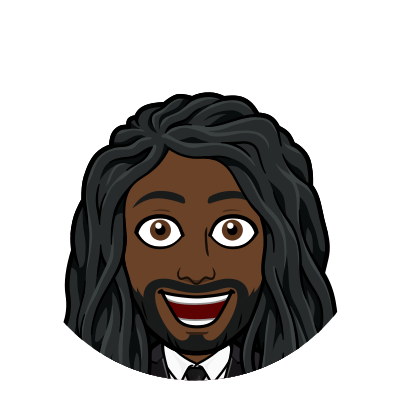How I Mastered the Art of Budgeting and Achieved Financial Freedom by 2025: A Personal Journey to Debt-Free Wealth Building
- Jay Mitch

- Dec 31, 2024
- 4 min read
Note: Before you start reading the rest of the article, there are affiliate links in the links given below, and if you buy something, I’ll get a commission at no extra cost to you.
In the creative industry, managing money can feel like a challenge. I often found myself riding a rollercoaster of highs and lows; one month I’d splurge on a project, and the next, I’d be worried about making rent. If this sounds like you, you’re not alone. I needed to seize control of my finances. This is my story of mastering budgeting, overcoming debt, and laying the foundation for building wealth.
Understanding My Financial Landscape
When I kicked off my creative career, I didn’t focus on budgeting. My spending on art supplies, software, and inspiration felt justified by my passion. However, my carefree approach led to harsh reality checks when I found myself with over $15,000 in credit card debt and looming student loans. I knew I had to change my ways. This realization was a wake-up call that prompted me to learn to budget effectively, aiming for financial stability by 2025.
Crafting a Personal Budget
Faced with my debts, I needed a solid plan. I began by creating a personal budget that listed my monthly income alongside my expenses. This wasn’t just about the math; it required a clear-eyed evaluation of how I was spending my money.
Utilizing budgeting apps like EveryDollar and YNAB, I was able to visualize my spending patterns. For example, I was shocked to uncover that I spent nearly $200 monthly on coffee and dining out. By cutting back on these areas, I could redirect more than $2,400 annually toward paying off debts.
Setting Realistic Goals
Next, I set achievable financial goals that motivated me. I wanted to chip away at my debt while building an emergency fund—all before 2025. This involved a shift in my mindset, viewing budgeting not just as a necessity but as a way to thrive.
I broke down my objectives into smaller, manageable targets. Instead of trying to pay off all my credit card debt at once, I focused on eliminating one card each month. This strategy made the process feel less daunting and more attainable.
Embracing a Minimalist Mindset
Adopting a minimalist outlook transformed how I managed my finances. I realized that simplifying my lifestyle significantly reduced unnecessary expenses. I learned to prioritize experiences over possessions. Creative outlets like exploring parks and attending free community events replaced expensive nights out, enriching my life without depleting my budget.
This new mindset didn’t just safeguard my finances; it also provided fresh inspiration for my creative work. I began to find beauty in simplicity and a deeper connection to my surroundings.

Automating My Savings and Payments
To streamline my budgeting process, I opted for automation. I established automatic payments for my debts and transferred a percentage of my income directly into a savings account each month. This “out of sight, out of mind” method minimized the temptation to overspend, ensuring my budgeting goals stayed on track.
Creating a dedicated savings account enhanced my sense of security. This financial buffer allowed me to manage unexpected costs without relying on credit cards, helping me avoid further debt.
Learning from Mistakes
Even though I made significant progress, I still faced setbacks. There were months when I overspent due to stress or unforeseen circumstances. Instead of feeling guilty, I used these experiences as opportunities for growth.
I closely monitored my spending patterns to identify spending triggers, like emotional purchases. Recognizing these patterns helped me implement strategies to resist the urge to slip back into old habits. This awareness became crucial in my journey toward financial freedom.
Seeking Financial Education
Investing time in financial education became vital to my progress. I read personal finance books, attended workshops, and watched documentaries on money management. Empowered by knowledge, I became more confident in my financial decisions.
I connected with creative communities to share insights and strategies. Talking with others facing similar challenges allowed us to exchange tips on managing financial stress while supporting our artistic pursuits.
Celebrating Progress
As I made progress in mastering my budget, I took time to celebrate my achievements, no matter how small. Paying off my first credit card felt monumental. Instead of treating myself with material items, I opted for experiences, like a day trip to a nearby coastal town. These small celebrations served as motivators and reinforced my commitment to financial freedom.

Preparing for Wealth-Building
With my debt significantly reduced and my budget healthy, I shifted my focus toward wealth-building. I began researching investment options tailored for creatives, such as mutual funds and real estate. Understanding that wealth-building would require my money to work for me was crucial.
As my mindset evolved, I realized that my goal was not just to eliminate debt but to create a future full of abundance. By planning for investments, I positioned myself for long-term growth and financial stability.
Moving Forward with Confidence
Mastering budgeting as a creative professional is an ongoing journey, but my experience has shown me that it's possible. By assessing my financial situation, crafting a personal budget, and adopting a wealth-building mentality, I have paved the way toward financial freedom.
As I approach 2025, I feel prepared not just to survive but to flourish. If you are ready to conquer your debts and achieve financial independence, remember that you can take this journey and master budgeting. Every action counts, and each change contributes to a brighter financial future. Let's embrace this path together, one budget at a time.
Want to read more?
Subscribe to stockupbuildingwealth.com to keep reading this exclusive post.






